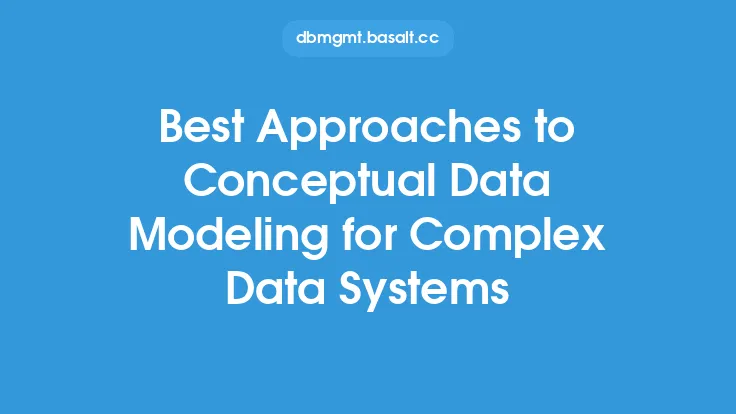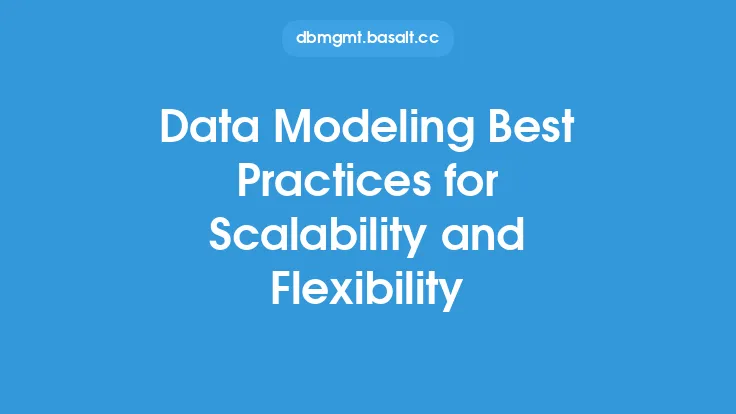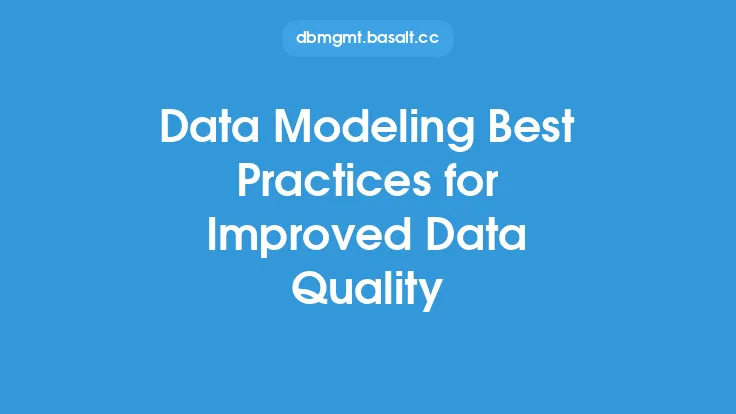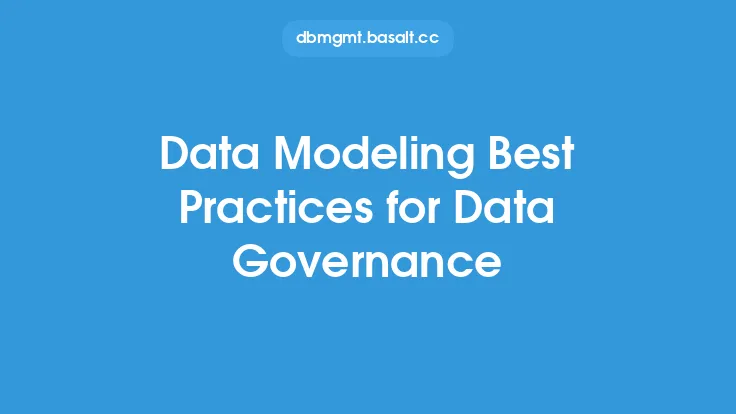When dealing with complex data relationships, it's essential to have a solid data modeling foundation to ensure that your data is organized, accessible, and scalable. Data modeling is the process of creating a conceptual representation of your data, and it's crucial to follow best practices to simplify complex data relationships. In this article, we'll explore the key principles and techniques for simplifying complex data relationships through effective data modeling.
Introduction to Data Modeling
Data modeling involves creating a visual representation of your data, including entities, attributes, and relationships. It's a critical step in the data management process, as it helps to identify, analyze, and communicate complex data relationships. A well-designed data model can help to simplify complex data relationships by providing a clear and concise representation of the data, making it easier to understand and work with.
Identifying Entities and Attributes
The first step in simplifying complex data relationships is to identify the entities and attributes involved. Entities are the objects or concepts that are being modeled, such as customers, orders, or products. Attributes are the characteristics or properties of these entities, such as customer name, order date, or product price. It's essential to identify all the relevant entities and attributes to ensure that your data model is comprehensive and accurate.
Defining Relationships
Once you've identified the entities and attributes, the next step is to define the relationships between them. Relationships can be one-to-one, one-to-many, or many-to-many, and they can be simple or complex. For example, a customer can have many orders, but an order is associated with only one customer. Defining these relationships is critical to simplifying complex data relationships, as it helps to identify dependencies and constraints.
Normalization Techniques
Normalization is the process of organizing data to minimize data redundancy and dependency. There are several normalization techniques, including first normal form (1NF), second normal form (2NF), and third normal form (3NF). Each normalization technique helps to simplify complex data relationships by eliminating redundant data and ensuring that each piece of data is stored in one place and one place only.
Denormalization Techniques
While normalization is essential for simplifying complex data relationships, denormalization can also be useful in certain situations. Denormalization involves intentionally duplicating data to improve performance or simplify complex queries. However, denormalization should be used judiciously, as it can lead to data inconsistencies and redundancy.
Data Modeling Tools and Techniques
There are several data modeling tools and techniques available to help simplify complex data relationships. These include entity-relationship diagrams (ERDs), data flow diagrams (DFDs), and object-relational mapping (ORM) tools. ERDs are graphical representations of entities and relationships, while DFDs show the flow of data between entities. ORM tools help to map objects to relational databases, making it easier to work with complex data relationships.
Data Warehousing and Business Intelligence
Data warehousing and business intelligence (BI) are critical components of simplifying complex data relationships. A data warehouse is a centralized repository that stores data from various sources, making it easier to access and analyze. BI tools help to analyze and visualize data, providing insights into complex data relationships.
Data Governance and Security
Data governance and security are essential for simplifying complex data relationships. Data governance involves managing data access, quality, and security, while data security involves protecting data from unauthorized access or breaches. By implementing robust data governance and security measures, you can ensure that your data is accurate, reliable, and secure.
Best Practices for Simplifying Complex Data Relationships
To simplify complex data relationships, follow these best practices:
- Identify all relevant entities and attributes
- Define relationships clearly and concisely
- Use normalization techniques to minimize data redundancy
- Use denormalization techniques judiciously
- Use data modeling tools and techniques to visualize and analyze data
- Implement robust data governance and security measures
- Use data warehousing and BI tools to analyze and visualize data
Conclusion
Simplifying complex data relationships is critical to ensuring that your data is organized, accessible, and scalable. By following the best practices outlined in this article, you can create a robust data model that simplifies complex data relationships, making it easier to work with and analyze your data. Remember to identify entities and attributes, define relationships clearly, use normalization and denormalization techniques, and implement robust data governance and security measures. With the right data modeling tools and techniques, you can unlock the full potential of your data and make informed decisions to drive your business forward.





